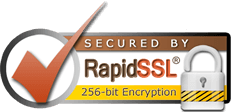WordPress is an open-source application so security level issues you may face but Do not worry KLCWEB has a solution, Let's go through it.
Note: Please backup your WordPress files and database before you make any changes to the files or database.
=> Keep updating your WordPress with a new version.
- Most common hacks/injections happen due to outdated WordPress, Themes, or plugins. So you should always keep up to date with the latest version of WordPress.
- The latest version of WordPress is always available from the main WordPress website Here or you can update your WordPress from WordPress Dashboard.
- Always install themes, plugins recommended by https://wordpress.org/
2. Set strong Password
A strong password is necessary not just to protect your blog content. A hacker who gains access to your administrator account is able to install malicious scripts that can potentially compromise your entire server.
You can avoid such things time of the set a password:
- Any permutation of your own real name, username, company name, or name of your website.
- A word from a dictionary, in any language.
- A short password.
- Any numeric-only or alphabetic-only password (a mixture of both is best).
3. Disable File Editing
You can disable File editing from your WordPress and set admin only and put the below code inside the wp-config.php file so on one can edit plugin and themes, PHP
define('DISALLOW_FILE_EDIT', true);RENAME table `wp_commentmeta` TO `wp_myprefix_commentmeta`;RENAME table `wp_comments` TO `wp_myprefix_comments`;RENAME table `wp_links` TO `wp_myprefix_links`;RENAME table `wp_options` TO `wp_myprefix_options`;RENAME table `wp_postmeta` TO `wp_myprefix_postmeta`;RENAME table `wp_posts` TO `wp_myprefix_posts`;RENAME table `wp_terms` TO `wp_myprefix_terms`;RENAME table `wp_term_relationships` TO `wp_myprefix_term_relationships`;RENAME table `wp_term_taxonomy` TO `wp_myprefix_term_taxonomy`;RENAME table `wp_usermeta` TO `wp_myprefix_usermeta`;RENAME table `wp_users` TO `wp_myprefix_users`;











